
Activity Reports
Australian volunteer Paul Bilney – in Ishinomaki four times
September 19, 2012
Mr Paul Bilney (hereafter referred to as Paul) tells us, “I’m back here in Ishinomaki!”
Paul first came to Ishinomaki all the way from Australia in April last year soon after the disaster struck. A veteran international volunteer, Paul he has now joined Peace Boat’s disaster relief efforts four times, playing an important role in the reconstruction process of Ishinomaki and support of survivors.
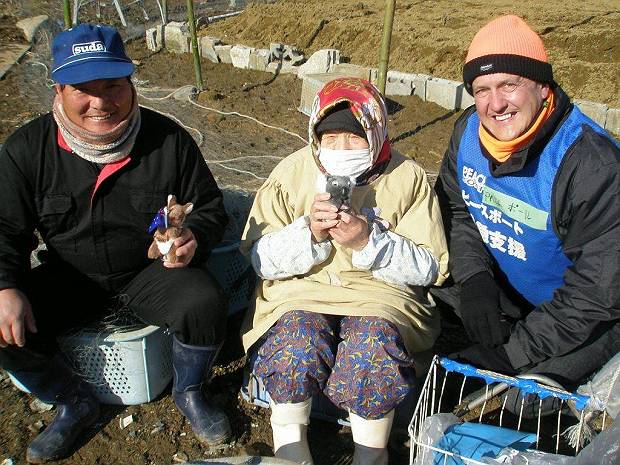
Sharing souvenir kangaroos and koalas with local friends
Paul was first involved in disaster relief work following the Sumatra-Andaman Earthquake, visiting Thailand in 2005 with Australian police and specialised organisations.
Learning that so many people had been affected by the 11 March disaster, he gave a lot of consideration as to what contribution could be made, and decided to come to Japan in April. The first three trips to Japan were funded by Paul himself, but the most recent trip was sponsored by an initiative of the Japan Australia Friendship Association (JAFA) in Adelaide, Australia.
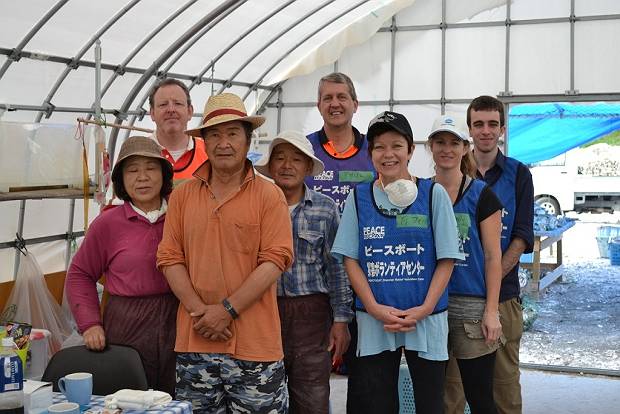
On this most recent visit, Paul was accompanied by his partner Fiona, Kelly Morelli, James Lawler and Richard Jones.
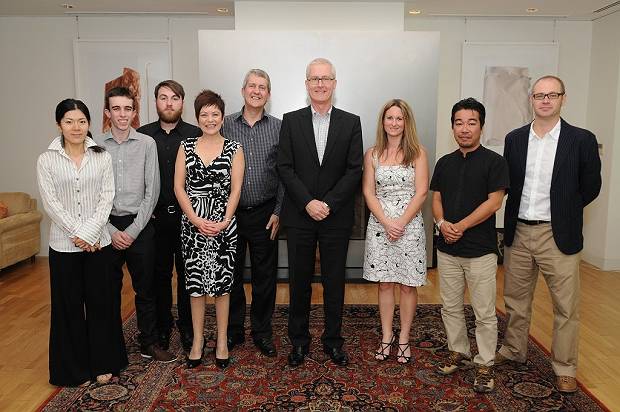
Their activities reached the ears of the Australian Ambassador to Japan Bruce Miller, and the group was invited to the Ambassador's Residence prior to Paul's fourth volunteer visit.
Paul has noticed a great deal of change in the tasks assigned to volunteers over his four trips, as well as in Ishinomaki itself. Last year was almost all about cleaning up – filling countless numbers of bags with mud and debris, cleaning out homes, shops, streets and drains. This year was more about working with the locals on community-based projects such as the building of community gardens and helping fishermen restore their fishing infrastructure.
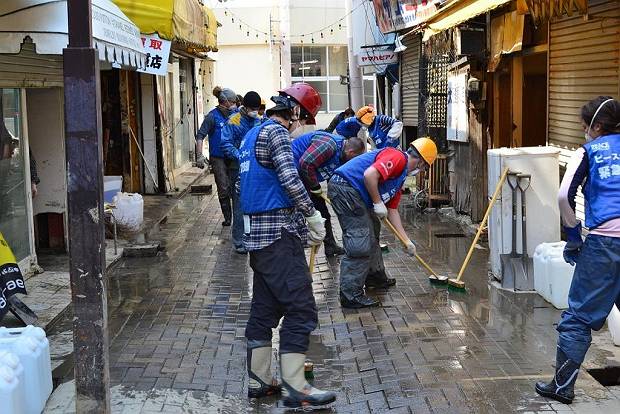
Paul and colleagues cleaning the Ishinomaki streets in April, 2011
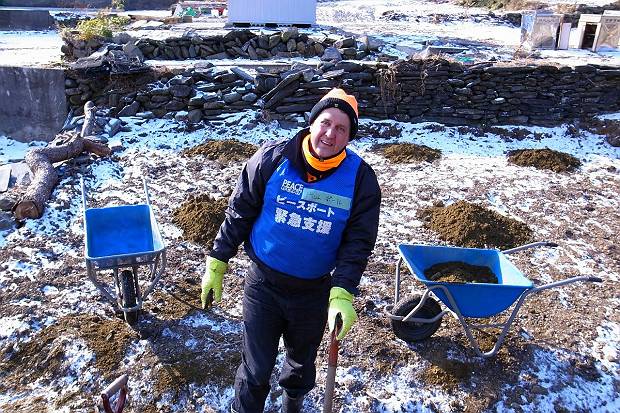
Creating gardens as support for residents of temporary housing in January 2012

Paul gives a koala to a local friend and fisherman
Paul and the team worked closely with local fishermen at various locations on the Oshika Peninsula. Sorting oyster shells, drilling holes in them and stringing them onto nylon ropes was an unusual experience for the group but it was essential to get the hoya (sea squirt) farming up and running again. The work was particularly satisfying, in that the team was able to work side by side with the fishermen and had time to talk with them about what happened and their plans for the future. Paul told us that it was remarkable how positive everyone seemed to be about the future, even though the recovery will clearly take a long time. Even more remarkable was their generosity. It seemed as if every time the group took a break a bag of something would come out – cold drinks, ice creams, fresh fruit or a local delicacy. Paul says it was very moving and humbling for all the volunteers to be offered these things from the local people.
The group’s activities on the Oshika Peninsula have been introduced in this video by “Ganbatte 365″ – watch the English version embedded at the bottom of this article.
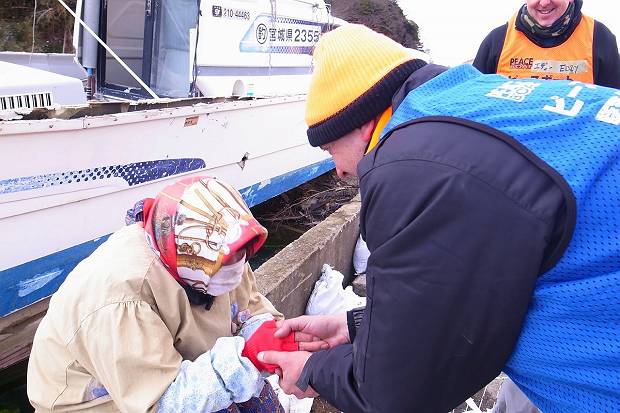
Paul has been very busy presenting about Tohoku in Australia, giving over 16 presentation to more than 1,000 people in businesses, schools, universities and service clubs. Paul says that the media do not report much if anything at all now about the situation in Tohoku nor the recovery efforts. Therefore, most people think that everything is now recovered, and things are “back to normal”. “I will make sure that the people of Tohoku are not forgotten,” Paul said. He is currently planning a 5th trip with more volunteers later this year.
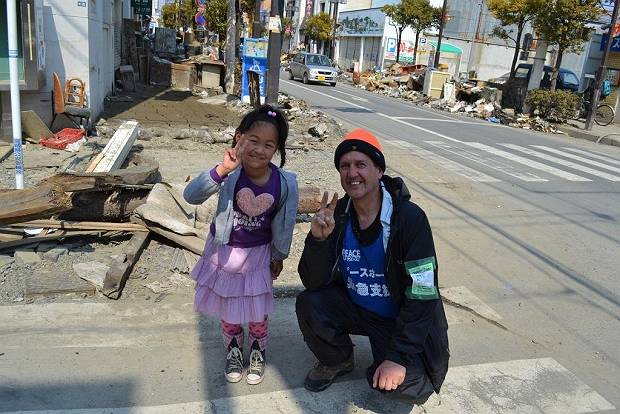
Gambatte 365 video of Hoya Farming in Ishinomaki:
TAGS: Adelaide • Australia • fishing industry • international volunteers • Ishinomaki • Oshika Peninsula • Peace Boat • Volunteers


